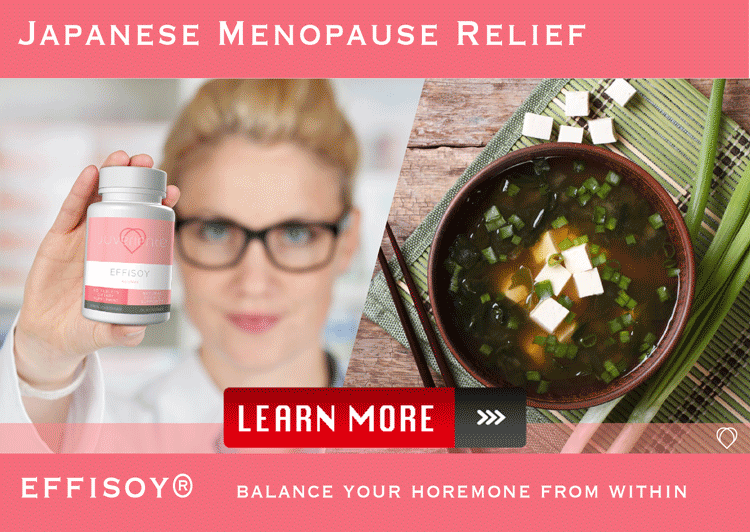Introduction: Heat Stroke and Its Risks for Middle-Aged and Older Women
Heat stroke is a severe and potentially life-threatening condition that occurs when the body’s temperature regulation system fails, leading to an excessive rise in body temperature. Middle-aged and older women are particularly vulnerable to heat stroke due to various physiological and lifestyle factors. Understanding these risks and the potential for brain damage after heat stroke is crucial for this demographic.
Increased Vulnerability in Middle-Aged and Older Women
As women age, their bodies undergo several changes that can increase susceptibility to heat stroke. The natural aging process affects the body’s ability to regulate temperature, making it harder to cope with extreme heat. Additionally, middle-aged and older women often have a higher prevalence of chronic health conditions, such as cardiovascular disease and diabetes, which can impair the body’s heat response. Medications commonly prescribed for these conditions can also interfere with heat regulation and increase the risk of heat stroke.
The Importance of Awareness and Prevention
Awareness and prevention are key to protecting middle-aged and older women from heat stroke and its severe consequences, including brain damage. Brain damage after heat stroke can occur due to prolonged exposure to high temperatures, leading to inflammation, swelling, and even permanent neurological impairment. Early recognition of heat stroke symptoms, such as confusion, dizziness, and rapid heartbeat, is essential for timely intervention and reducing the risk of brain damage.
Conclusion
Heat stroke poses significant risks for middle-aged and older women, particularly regarding potential brain damage. Understanding the increased vulnerability of this demographic and the importance of early detection and prevention measures is crucial. By staying informed and taking proactive steps, middle-aged and older women can protect themselves from the severe effects of heat stroke and maintain their health and well-being.
Symptoms and Early Signs of Heat Stroke in Older Adults
Heat stroke is a medical emergency that requires prompt recognition and treatment. Middle-aged and older women, in particular, should be aware of the symptoms and early signs of heat stroke to prevent severe complications, including brain damage after heat stroke.
Recognizing Symptoms of Heat Stroke
Heat stroke manifests through various symptoms that signal the body’s inability to regulate temperature. Early symptoms often include a high body temperature above 104°F (40°C), which is a critical indicator. Other common signs are:
- Headache and Dizziness: A throbbing headache and lightheadedness are often initial indicators of heat stroke. These symptoms arise as the body struggles to cope with extreme heat.
- Altered Mental State: Confusion, agitation, slurred speech, irritability, delirium, or even seizures can occur. This is particularly concerning as it indicates that the brain is being affected by the high temperatures.
- Nausea and Vomiting: The body’s response to overheating can include nausea and vomiting, which further depletes the body’s fluids and exacerbates dehydration.
- Flushed Skin: The skin may appear red and feel hot to the touch due to increased body temperature.
Specific Signs in Older Adults
In older adults, the symptoms of heat stroke might present differently or be mistaken for other health issues. Some specific signs to watch for include:
- Altered Sweating: In heat stroke caused by hot weather, the skin will feel hot and dry. In heat stroke caused by strenuous exercise, the skin may feel moist. Older adults, however, may not sweat as much due to aging, which can delay the recognition of heat stroke.
- Rapid Heartbeat: A rapid, strong pulse is a critical symptom. It indicates that the heart is working harder to pump blood to cool the body down.
- Rapid Breathing: Rapid, shallow breathing is another sign, as the body tries to expel heat through respiration.
- Muscle Cramps: Severe muscle cramps or spasms, often in the legs or abdomen, can occur as the body loses salt and moisture.
Importance of Early Detection
Early detection and intervention are crucial to prevent brain damage after heat stroke. If any of these symptoms are observed, it is essential to seek immediate medical help. Quick response can mitigate the risk of long-term complications, including cognitive impairment and neurological damage.
Conclusion
Understanding and recognizing the symptoms and early signs of heat stroke in middle-aged and older women are vital steps in preventing severe health consequences. Symptoms such as a high body temperature, altered mental state, and rapid heartbeat should not be ignored. Prompt medical intervention can reduce the risk of brain damage after heat stroke and ensure better health outcomes for those affected.
How Heat Stroke Can Lead to Brain Damage
Heat stroke is a life-threatening condition that can have severe consequences, including brain damage. Understanding the mechanisms behind how heat stroke can lead to brain damage is crucial for preventing and managing this serious health issue, particularly in middle-aged and older women.
The Pathophysiology of Heat Stroke
Heat stroke occurs when the body’s temperature regulation system fails, leading to a rapid increase in core body temperature. When the body overheats, several physiological processes begin to malfunction, resulting in widespread cellular and tissue damage.
- Hyperthermia and Cellular Damage: Excessive heat can cause proteins and enzymes within cells to denature, disrupting normal cellular functions. This cellular damage can affect various organs, including the brain.
- Inflammatory Response: The body’s response to heat stress includes an inflammatory reaction. Cytokines and other inflammatory mediators are released, which can lead to swelling and increased intracranial pressure. This inflammation can compromise the blood-brain barrier, allowing toxins to enter the brain and cause further damage.
Impact on Brain Function
The brain is particularly vulnerable to the effects of heat stroke due to its sensitivity to temperature changes and its high metabolic demands.
- Cerebral Edema: Prolonged exposure to high temperatures can lead to cerebral edema, or swelling of the brain. This swelling increases intracranial pressure, which can impair blood flow to the brain and cause ischemia, or lack of oxygen.
- Neuronal Damage: The combination of hyperthermia, inflammation, and reduced blood flow can cause direct damage to neurons. This neuronal damage can result in cognitive impairments, memory loss, and other neurological deficits.
- Oxidative Stress: Heat stroke also induces oxidative stress, which leads to the production of free radicals. These free radicals can damage brain cells and contribute to long-term neurological problems.
Long-Term Consequences
The long-term consequences of brain damage after heat stroke can be severe and debilitating, particularly for middle-aged and older women who may already be at risk for cognitive decline.
- Cognitive Impairment: Survivors of heat stroke may experience difficulties with memory, attention, and executive functions. These cognitive impairments can affect daily activities and reduce the quality of life.
- Neurological Disorders: In severe cases, brain damage from heat stroke can lead to chronic neurological conditions such as epilepsy, motor dysfunction, and even permanent vegetative states.
Conclusion
Understanding how heat stroke can lead to brain damage underscores the importance of early detection and prevention. By recognizing the signs of heat stroke and taking immediate action, the risk of brain damage can be significantly reduced. Middle-aged and older women, in particular, should be aware of these risks and adopt preventive measures to protect themselves from the potentially devastating effects of heat stroke. Effective management of heat stroke involves not only immediate cooling and medical intervention but also long-term monitoring and support to address any neurological consequences.
Preventive Measures to Protect Against Heat Stroke
Preventing heat stroke is crucial, especially for middle-aged and older women who are more vulnerable to its severe consequences, including brain damage after heat stroke. By adopting preventive measures, you can significantly reduce the risk of experiencing heat stroke and its potentially devastating effects.
Staying Hydrated
- Drink Plenty of Water Staying hydrated is one of the most effective ways to prevent heat stroke. Ensure you drink at least 8-10 glasses of water daily, especially during hot weather or when engaging in physical activities. Water helps regulate body temperature and replace fluids lost through sweating.
- Avoid Dehydrating Beverages Limit the intake of alcohol, caffeine, and sugary drinks, as they can contribute to dehydration. Instead, opt for water, herbal teas, and electrolyte-rich beverages to maintain proper hydration levels.
Dressing Appropriately
- Wear Lightweight, Loose-Fitting Clothing Choose clothing made of lightweight, breathable fabrics like cotton or linen. Loose-fitting clothes allow air to circulate and help keep your body cool. Light-colored clothing is preferable as it reflects heat rather than absorbing it.
- Use Sun Protection Wear a wide-brimmed hat, sunglasses, and apply broad-spectrum sunscreen with at least SPF 30 to protect your skin from harmful UV rays. Sunburn can interfere with your body’s ability to cool itself and increase the risk of heat-related illnesses.
Managing Outdoor Activities
- Avoid Peak Heat Hours Plan outdoor activities during the cooler parts of the day, such as early morning or late evening. Avoid being outdoors between 10 a.m. and 4 p.m., when the sun’s rays are the strongest.
- Take Frequent Breaks If you must be outdoors during hot weather, take frequent breaks in the shade or a cool environment to lower your body temperature. Resting periodically can help prevent overheating.
Creating a Cool Environment
- Use Fans and Air Conditioning Ensure your living environment is cool and well-ventilated. Use fans or air conditioning to maintain a comfortable indoor temperature. If you don’t have air conditioning, consider visiting public places like shopping malls or libraries to stay cool.
- Keep Curtains and Blinds Closed During the hottest part of the day, keep curtains and blinds closed to block out direct sunlight and reduce indoor temperatures.
Recognizing Early Signs
- Monitor for Symptoms Be vigilant about recognizing the early signs of heat stroke, such as dizziness, headache, nausea, and excessive sweating. Early detection and prompt action can prevent the condition from escalating to a more severe stage, including brain damage.
- Seek Immediate Help If you or someone around you exhibits symptoms of heat stroke, seek medical attention immediately. Quick intervention can significantly reduce the risk of brain damage after heat stroke and other severe complications.
Conclusion
Implementing these preventive measures can help middle-aged and older women protect themselves from heat stroke and its serious consequences. Staying hydrated, dressing appropriately, managing outdoor activities, creating a cool environment, and recognizing early signs are all crucial steps in preventing heat stroke. By taking these precautions, you can enjoy the summer months safely and reduce the risk of brain damage after heat stroke.
Recovery and Rehabilitation After Heat Stroke-Induced Brain Damage
Recovering from heat stroke-induced brain damage is a challenging process that requires a comprehensive approach. Middle-aged and older women, in particular, must focus on specific rehabilitation strategies to regain cognitive function and overall health. Understanding the steps involved in recovery can help manage expectations and improve outcomes.
Immediate Post-Recovery Care
- Medical Intervention Immediate medical attention is crucial for minimizing brain damage after heat stroke. Once stabilized, the patient will often undergo a series of tests to assess the extent of brain damage. This may include imaging tests such as MRI or CT scans, as well as neurological evaluations.
- Hydration and Cooling Rehydration and cooling techniques are vital during the initial recovery phase. Intravenous fluids and cooling blankets may be used to restore normal body temperature and hydration levels. These interventions help reduce the risk of further brain damage and stabilize the patient’s condition.
Rehabilitation Strategies
- Cognitive Rehabilitation Cognitive rehabilitation is essential for recovering brain function. This involves working with neurologists and occupational therapists to improve memory, attention, problem-solving, and other cognitive skills. Therapies may include cognitive exercises, memory drills, and computerized brain training programs.
- Physical Therapy Physical therapy helps regain motor skills and physical strength lost due to heat stroke. A tailored exercise program designed by a physical therapist can improve coordination, balance, and overall physical health. Activities might include strength training, balance exercises, and gentle aerobic workouts.
Lifestyle Adjustments
- Healthy Diet Nutrition plays a significant role in recovery. A diet rich in antioxidants, omega-3 fatty acids, and other brain-healthy nutrients can support cognitive recovery. Foods such as blueberries, salmon, walnuts, and leafy green vegetables should be included in the diet.
- Hydration Maintaining proper hydration is crucial. Drinking enough water daily helps support overall brain function and prevents further dehydration, which could exacerbate brain injury.
Psychological Support
- Mental Health Counseling Psychological support is vital for addressing the emotional and mental health challenges that often accompany recovery from brain damage. Counseling or therapy can help manage anxiety, depression, and stress, providing a holistic approach to recovery.
- Support Groups Joining support groups for individuals recovering from heat stroke can provide emotional support and practical advice. Sharing experiences with others who have undergone similar challenges can be incredibly beneficial for mental health.
Long-Term Monitoring
- Regular Check-Ups Continuous medical monitoring is essential to track recovery progress and detect any potential complications early. Regular follow-up appointments with healthcare providers, including neurologists and general practitioners, are necessary to adjust treatment plans as needed.
- Lifestyle Maintenance Adopting and maintaining a healthy lifestyle is crucial for long-term recovery. This includes regular physical activity, a balanced diet, proper hydration, and stress management techniques to support overall well-being and prevent recurrence.
Conclusion
Recovery and rehabilitation after heat stroke-induced brain damage require a multi-faceted approach involving immediate medical intervention, cognitive and physical rehabilitation, lifestyle adjustments, and psychological support. Middle-aged and older women must focus on these strategies to enhance recovery outcomes and regain cognitive function. By following a comprehensive recovery plan, the risk of long-term complications, including brain damage after heat stroke, can be significantly reduced.
Summary
Heat stroke poses significant risks for middle-aged and older women, particularly the threat of brain damage. Recognizing early symptoms, such as dizziness, headache, and confusion, is crucial for timely intervention. Brain damage after heat stroke results from hyperthermia, inflammation, and oxidative stress, leading to cognitive impairments and neurological disorders. Preventive measures include staying hydrated, dressing appropriately, managing outdoor activities, and creating a cool environment. Recovery involves immediate medical care, cognitive and physical rehabilitation, lifestyle adjustments, and psychological support. Adopting these strategies can help mitigate the long-term effects of brain damage after heat stroke, ensuring better health outcomes for affected individuals.
Balance your hormone with a natural supplement from Japan.
Juveriente®’s Effisoy, launched in 2016, based on fermented soy bean germ extract has been loved as a natural menopause relief since its launching in 2016.
Its primary function is to boost the weakened synthesis of a hormone precursor, DHEA. It helps the precursor, DHEA. Rebalancing the precursor will eventually recover your hormones in line with your natural balance. It will help you prevent summer heat fatigue, as well as help you with various anti-aging issues.
Here are some of the real product reviews in our Amazon shop.
“Restful sleep finally!!”, “I Am Now Free of Hot Flashes!!”, “Lifesaver”









